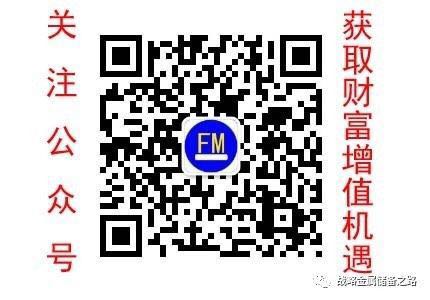
1、 Third generation semiconductor Gan: widely used in RF, power supply and Optoelectronics
In the age of 1.15g, the third generation semiconductor has obvious advantages
The first generation of semiconductor materials mainly refer to silicon (SI) and germanium (GE) element semiconductors. They have been widely used in various discrete devices and integrated circuits, electronic information network engineering and other fields of international information industry technology.
Second generation semiconductor materials refer to compound semiconductor materials, such as gallium arsenide (GaAs), indium antimonide (InSb), indium phosphide (INP), and ternary compound semiconductor materials, such as gallium arsenide (gaasal), gallium arsenide phosphate (GaAsP), etc. There are also some solid solution semiconductor materials, such as germanium silicon (Ge Si), gallium arsenide gallium phosphide (GaAs gap), etc.; glass semiconductor (also known as amorphous semiconductor) materials, such as amorphous silicon, glass oxide semiconductor, etc.; organic semiconductor materials, such as phthalocyanine, copper phthalocyanine, polyacrylonitrile, etc. The second generation semiconductor materials are mainly used for making high-speed, high-frequency, high-power and light-emitting electronic devices, which are excellent materials for making high-performance microwave, millimeter wave devices and light-emitting devices.
The third generation of semiconductor materials are mainly silicon carbide (SIC), gallium nitride (GAN), zinc oxide (ZnO), diamond, aluminum nitride (AlN) as the representative of wide band gap (gap width eg > 2.3ev).
Wide band gap semiconductor is suitable for high temperature, high frequency, radiation resistance and high power devices. Compared with the first and second generation semiconductor materials, the third generation semiconductor materials have wider band gap, higher breakdown electric field, higher thermal conductivity, higher electron saturation speed and higher radiation resistance, which are more suitable for making high-temperature, high-frequency, radiation resistant and high-power devices. From the current research of the third generation semiconductor materials and devices, the more mature third generation semiconductor materials are SiC and Gan, while the research of ZnO, diamond, aluminum nitride and other third generation semiconductor materials is still in the initial stage.
1.2 GaN has obvious advantages and rich application scenarios in 5g Era
Gallium nitride (GAN) is a very stable compound. It is also a hard and high melting point material with a melting point of 1700 ℃. Gan has a high degree of ionization, which is the highest (0.5 or 0.43). Under atmospheric pressure, GaN crystal is generally hexagonal wurtzite structure, because of its high hardness, so it is a good coating protection material. Gan has excellent breakdown ability, higher electron density, electron velocity and higher working temperature. Gan has a wide energy gap of 3.4ev and has the advantages of low on loss and high current density.
Gan is a kind of III / V direct band gap semiconductor, which is usually used in microwave RF, power electronics and optoelectronics. Specifically, the direction of microwave RF includes 5g communication, radar early warning, satellite communication and other applications; the direction of power electronics includes smart grid, high-speed rail transit, new energy vehicles, consumer electronics and other applications; the direction of Optoelectronics includes LED, laser, photodetector and other applications.
2、 RF: 5g base station, radar - Gan RF device has great potential
2.1 GaN has unique advantages in high temperature, high frequency and high power RF Applications
Since the first batch of commercial products appeared 20 years ago, GaN has become an important competitor of LDMOS and GaAs in RF power applications. Its performance and reliability are continuously improved and its cost is constantly reduced. The first batch of Gan on SiC and Gan on Si devices appeared almost at the same time, but Gan on SiC technology is more mature. At present, Gan on SiC, which dominates the RF Gan market, has broken through the 4G LTE wireless infrastructure market and is expected to be deployed in the RRH (remote radio head) of 5g sub-6ghz implementation scheme.
In common semiconductor technology, CMOS has the advantages of low power consumption, high integration and low cost. SiGe process has outstanding compatibility advantages and is compatible with almost all new process technologies in the silicon semiconductor VLSI industry. GaAs has excellent physical properties in the field of high power transmission. Gan has unique advantages in high temperature, high frequency and high power RF module applications. Based on factors such as power consumption and cost, the consumer terminal products obviously adopt more CMOS technology; CPE adopts CMOS and SiGe BiCMOS; low-power access points adopt CMOS, SiGe BiCMOS and GaAs; and the field of high-power base station is the world of GaAs and Gan.
Compared with 4G system, 5g MIMO has more transceivers and antenna units, and uses beamforming signal processing to transmit RF energy to users. The mmimo system can connect 192 antenna units to 64 transmit / receive (TRX) FEM. These TRX FEM have 16 transceivers RFIC and 4 digital front ends (DfES). Compared with the 4 transceivers in the typical LTE 4T MIMO, the digital signal processing performance can be improved 16 times. In 5g MIMO design, the increasing signal processing hardware greatly affects the system size, and the power consumption of signal processing is also approaching the power consumption of on-board power amplifier. In some cases, it even exceeds the power consumption of on-board power amplifier.
The design of mmimo helps to reduce the steps of a / D and a / D conversion in traditional transceiver architecture, so as to reduce the size and weight of 5g antenna. Compared with LDMOS devices, silicon-based Gan provides good broadband performance, excellent power density and efficiency, can meet strict thermal specifications, and saves precious PCB space for tightly integrated MIMO antenna array.
Gan is very suitable for high frequency and wide band needed in millimeter wave field, which can meet the requirements of performance and small size. Using mmwave
